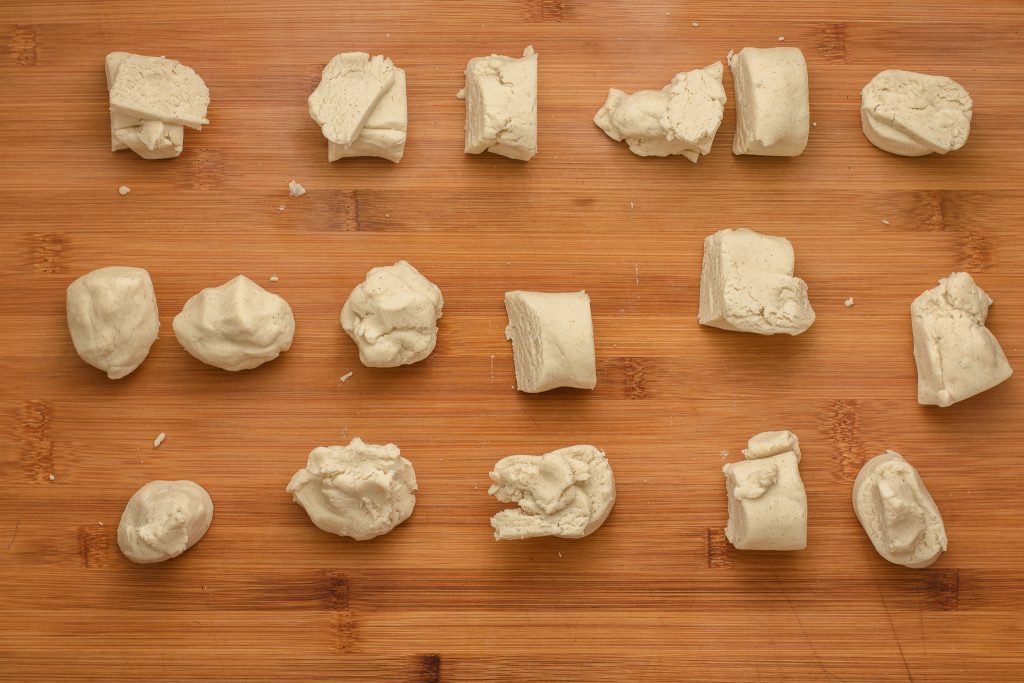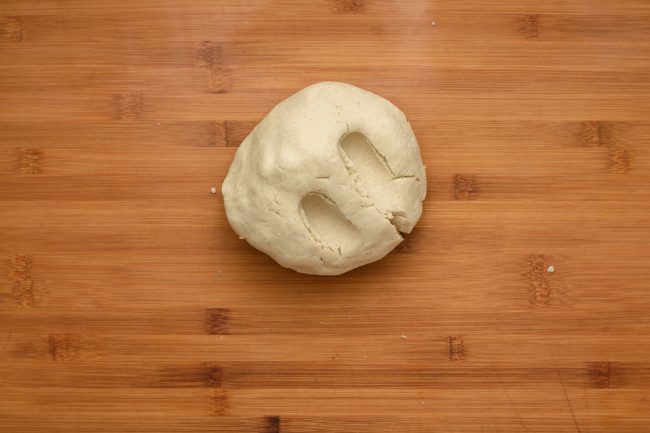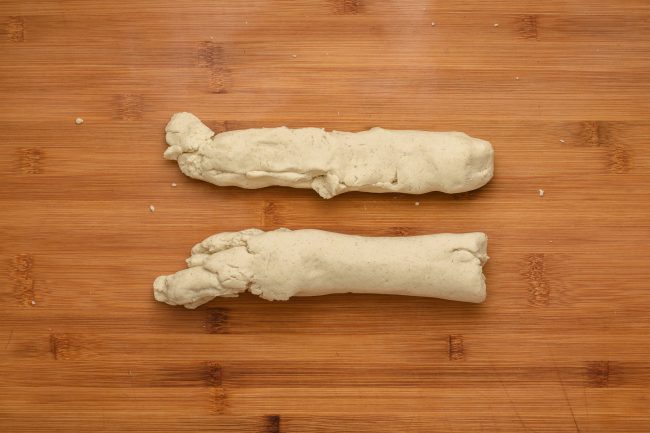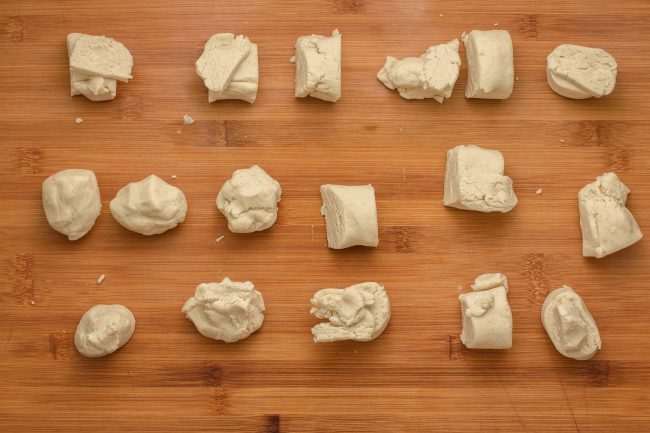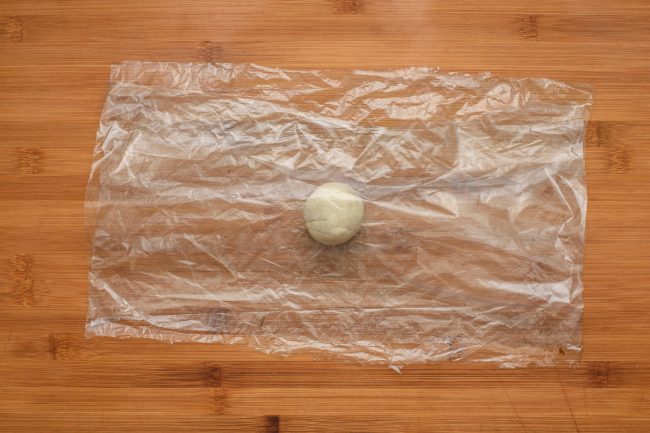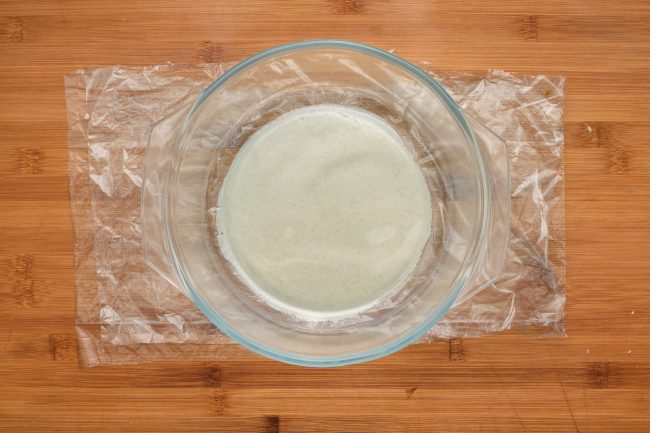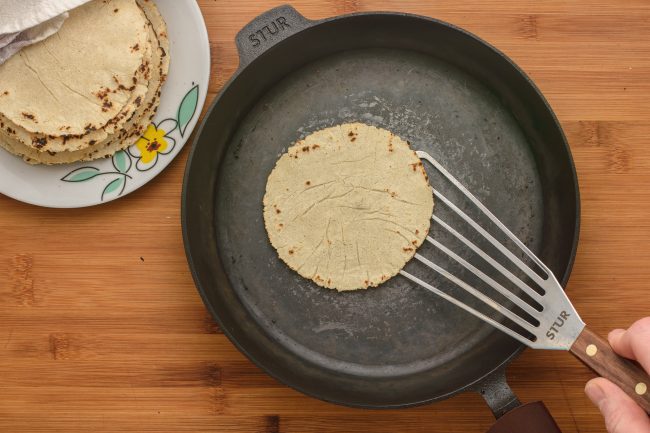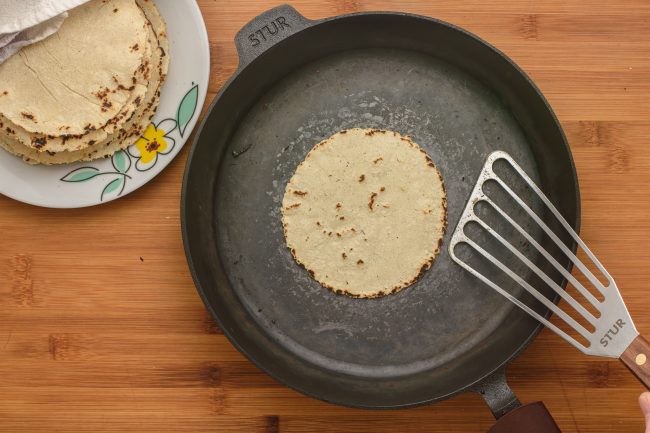How many tortillas are out there and which one is the best? Let’s make corn tortillas and see if it’s worth trying the rest!

Corn tortillas are what they sound like, tortillas made from corn. Yet, once we start to peel back its history, things get a bit more confusing, and we may understand why somebody felt the need to pinpoint a dish with such accuracy.
What tortillas really are?
The literal meaning of tortillas are “little cakes” and they are actually omelets made of eggs. Not American omelets or French omelets but Spanish ones. Although, nowadays Spanish omelets are filled with potatoes, it wasn’t always the case.
The origin of the potato in Spanish omelet is tightly wrapped with the history of the Tortillas on the American continent.
Prior the discovery of the New World, native Americans didn’t know about wheat but were really fond of corn and made all sort of dish from it as the burger like arepas or round wraps. Upon arrival, the Spanish started to call those round things tortillas because that is what they were in the closest sense of the word.
What’s in tortilla?
During the years no one seemed to care about it much so the name stuck with the corn wraps as much as the potatoes on the way back to the Old Continent with the Spanish omelet. Nowadays both, wrap and Spanish omelet, are known as tortilla in their respective countries but if that wouldn’t be enough, the rest of the world has jumped onto the bandwagon too and found it important to create their own version of it too.
Well, in reality flour tortillas were created in Northern Mexico as a way of innovation to avoid the fairly labor-intensive processes of corn preparation. Corn needs to be cured in limewater, peeled, grind, cooked then knead and only after that it is ready for consumption.
Fun fact that when corn was first exported to countries in Africa and Asia, people didn’t know about the way it was supposed to be processed and many became, sick due to vitamin B6 and amino acids deficiencies.
Flour or corn tortilla?
When European settlers introduced wheat, not many complained to keep their heritage and continue to make corn flour painfully but they happily switched to wheat or flour tortillas. Flour tortillas then quickly spread around the international community and became the de facto tortilla.
In some countries, where the marketing teams couldn’t come to an agreement about how they should sell it to the public, they decided to call it simply a wrap or less ambitiously savory crepes, but the gist remained the same.
Corn tortillas or simply tortillas as they are called in their homeland, are made of corn flour but most likely not from those that are labelled corn flour in our favorite grocery store. Most of the corn flour that we know of (those who thought tortillas are made of wheat flour) are actually ground cooked cornmeal that is excellent for arepas (given that we don’t mix it up with the Maizena corn starch) but won’t do for corn tortillas.
What flour to use for corn tortilla?
As we talked about it above, corn tortillas need specially prepared flour that some of us may find impossible to find while others can pick up from the shelves quite easily. Our best bet when hunting for it will be the Maseca brand’s Instant corn masa Flour. If that is not available, look for the “Maiz tratada con cal hidratada” or “Corn treated with hydrated lime” at the ingredients.
Once we got the right flour, we can whip up traditional corn tortillas in a blink of an eye, just as easily as we can make them from the flour that we’ve always known.
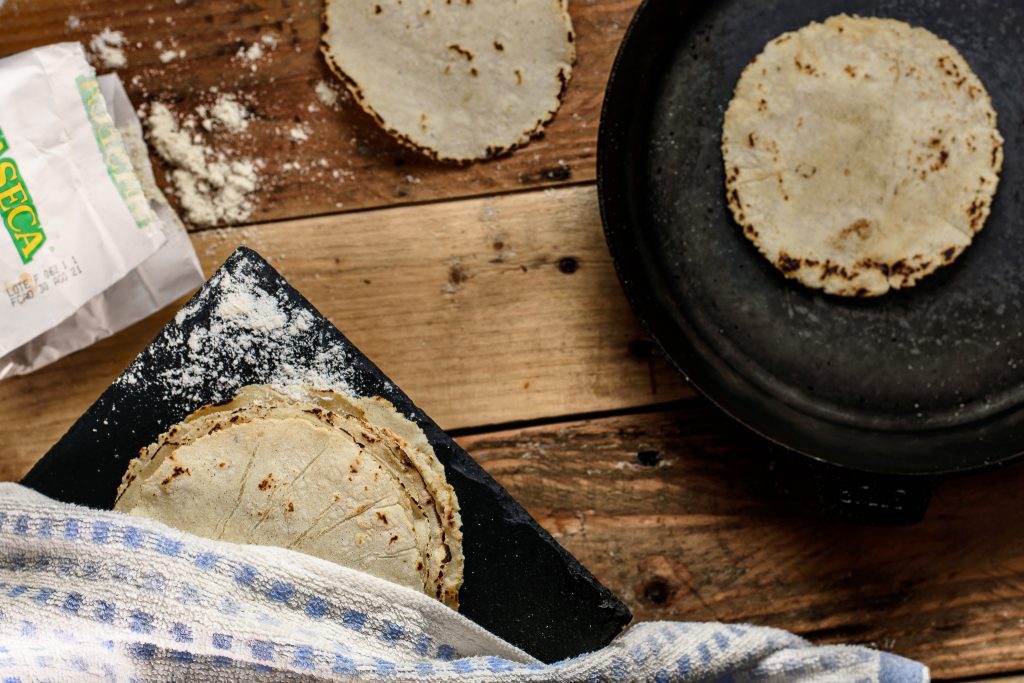
Ingredients
(17 Corn tortillas)
- 2 cups / 220g Corn flour (Maseca)
- 1½ cup / 330g Water
How to make Corn tortillas
- Mix together the corn flour and water.

- Gather it into a ball.

- Shape two rolls so it will be easier to measure out equal balls.

- Cut the rolls into equal pieces. Our favorite size is the 1 oz / 30g piece which will make a 4″ / 10cm disc once flattened.

- Form balls.

- Place a ball between two layers of plastic sheet.

- Press it down with something flat. A 1 oz / 30g ball will make a 4″ / 10cm disc. If someone is really into tortilla then there are special tortilla pressers out there to buy too!

- Heat a cast iron skillet to medium high then flip a tortilla on it. We first need to seal the tortilla both sides and then cook it. At the right temperature the whole process takes about 80 seconds, twice 20 seconds each side.

- Depending on the heat, in about 20 seconds flip the tortilla to the other side. If it has big burnt batches already then take the heat down a notch. We may see some air pocket coming up at this stage, that’s normal and the sign of a good tortilla.

- After about 20 seconds, flip it again then wait 20 seconds more and flip it again.

- Cover the tortillas with a kitchen cloth. The top ones are a bit crispy but the ones at the bottom are ready to be filled. Freeze the leftover so there are always backup tortillas ready to be filled.

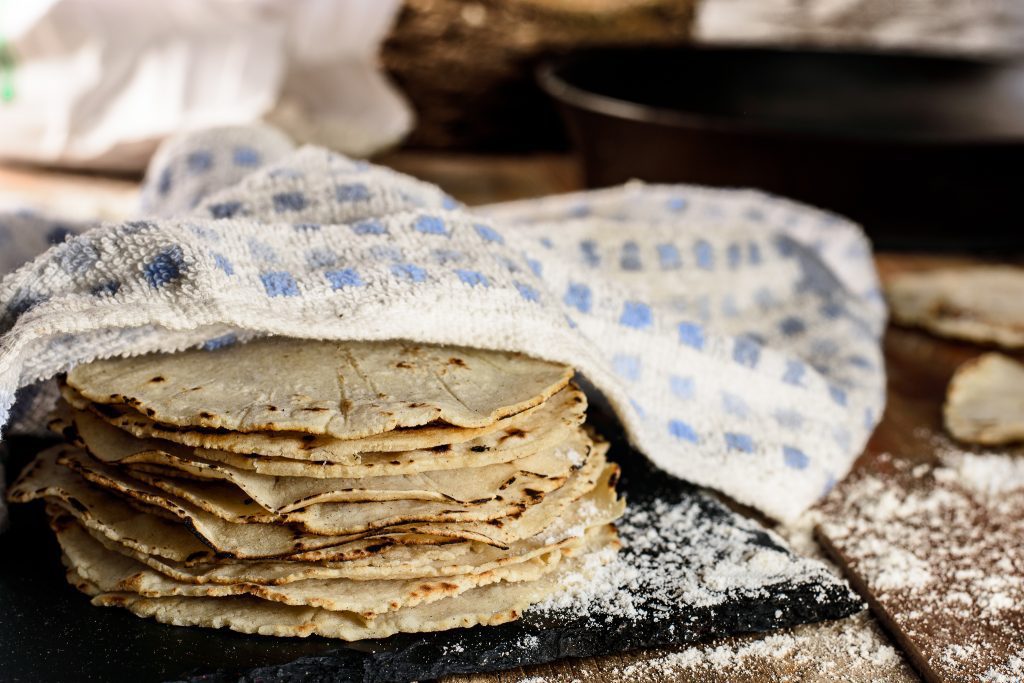
Enjoy!
There are more things to wrap our food around!


Star this recipe!
Corn Tortilla Recipe
Ingredients
- 2 cups Corn flour Maseca
- 1½ cup Water
Instructions
- Mix together the corn flour and water.

- Gather it into a ball.

- Shape two rolls so it will be easier to measure out equal balls.

- Cut the rolls into equal pieces.

- Form balls.

- Place a ball between two layers of plastic sheet.

- Press it down with a dish. There are special tortilla pressers out there to buy too!

- Heat a cast iron skillet to medium high then flip a tortilla on it. We first need to seal the tortilla both sides and then cook it. At the right temperature the whole process takes about 80 seconds, twice 20 seconds each side.

- Depending on the heat, in about 20 seconds flip the tortilla to the other side. If it has big burnt batches already then take the heat down a notch. We may see some air pocket coming up at this stage, that’s normal and the sign of a good tortilla.

- After about 20 seconds, flip it again then wait 20 seconds more and flip it again for the last 20 seconds.

- Cover the tortillas with a kitchen cloth. The top ones are a bit crispy but the ones at the bottom are ready to be filled. Freeze the leftover so there are always backup tortillas ready to be filled.

Notes
Nutrition
Pin now, Enjoy later!




